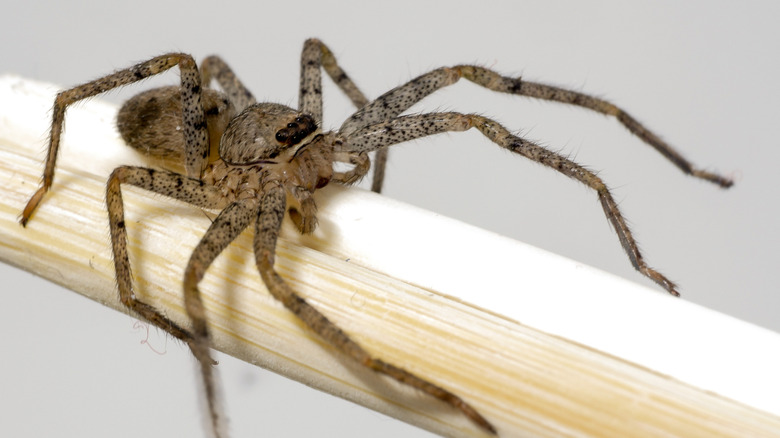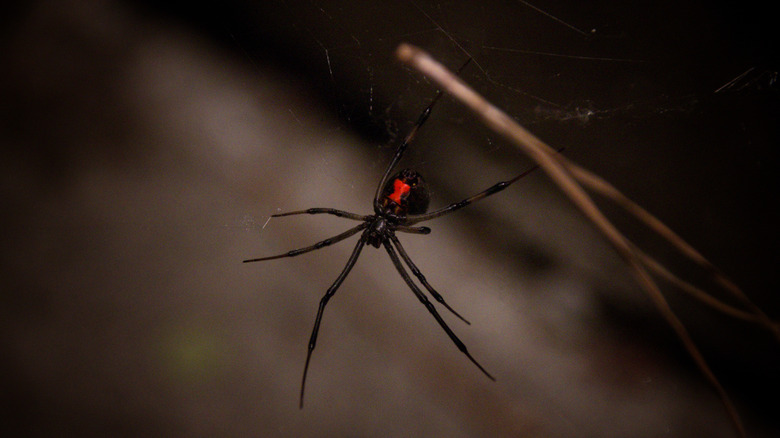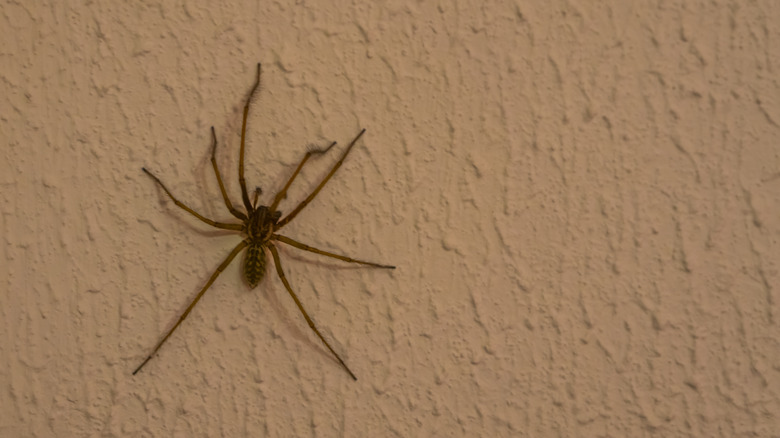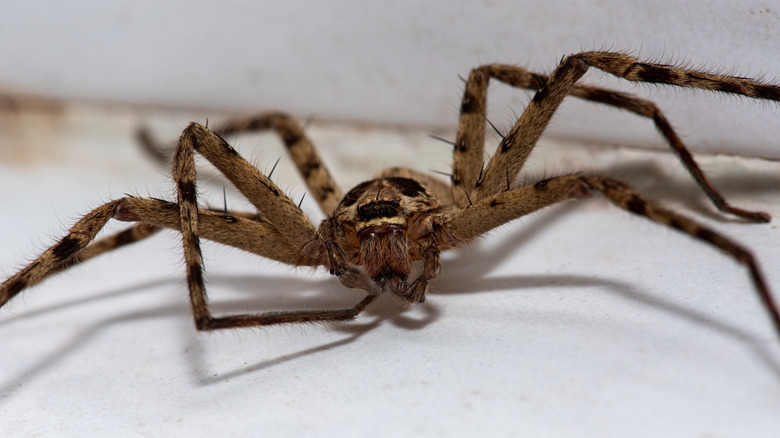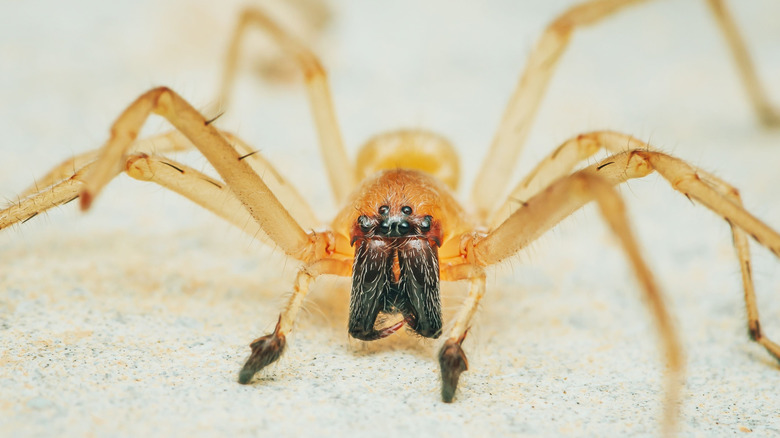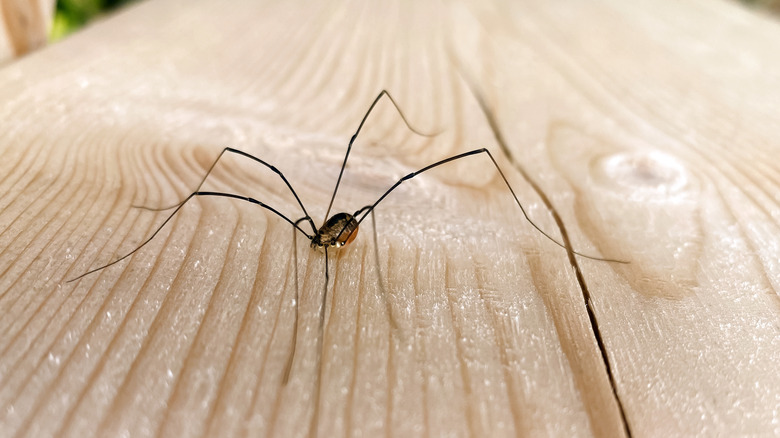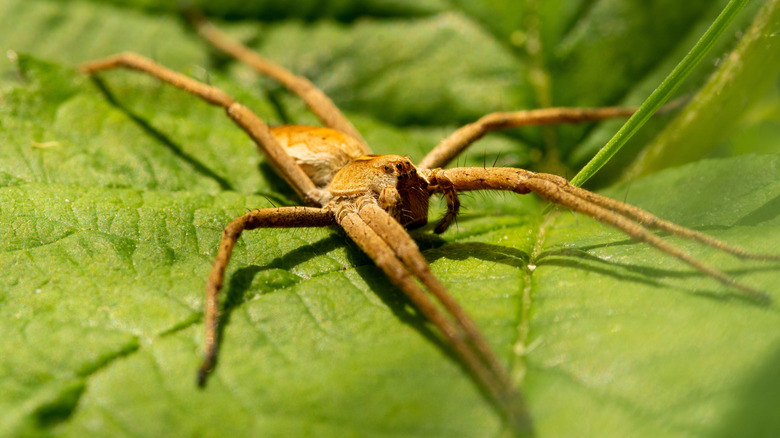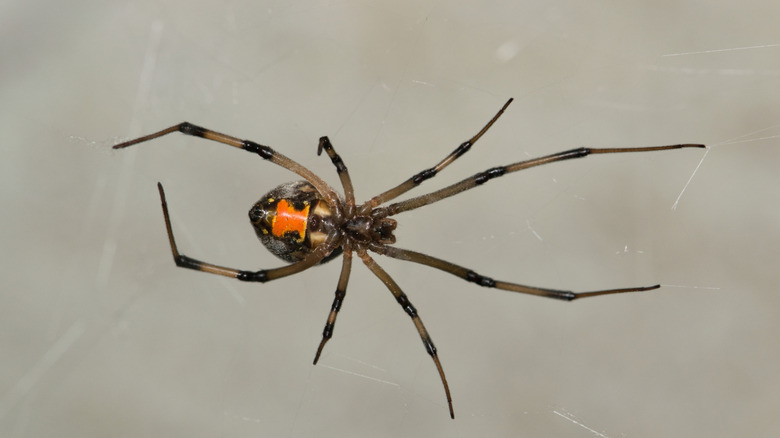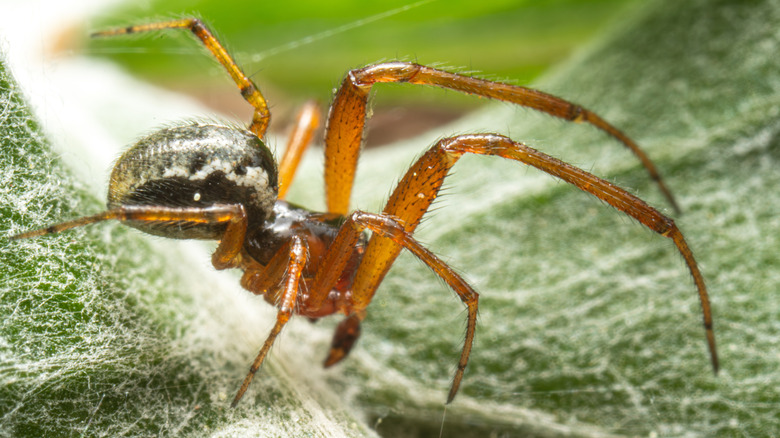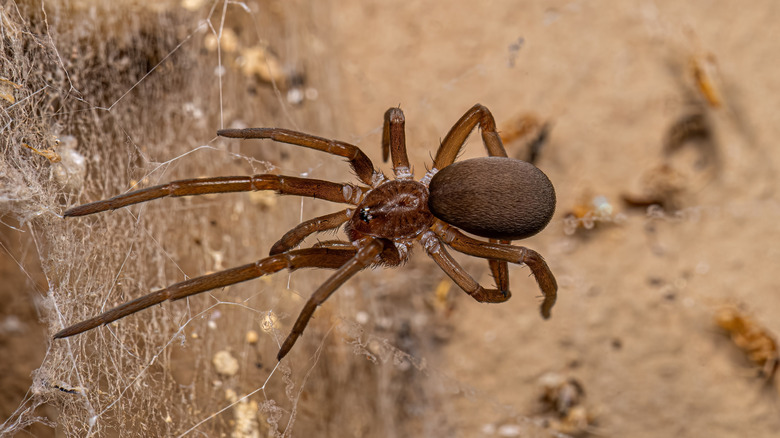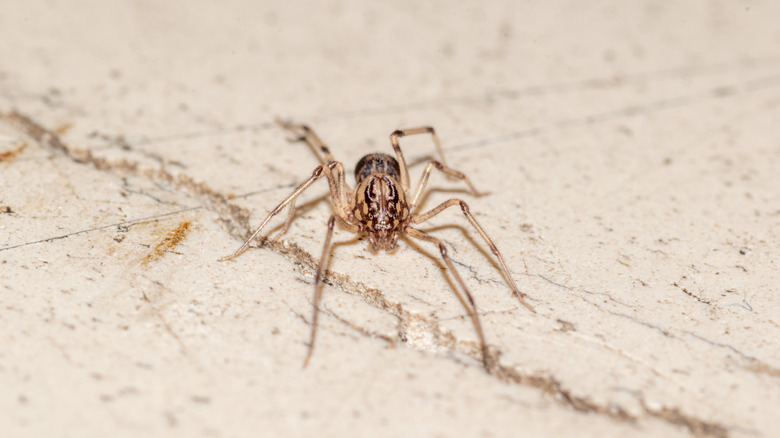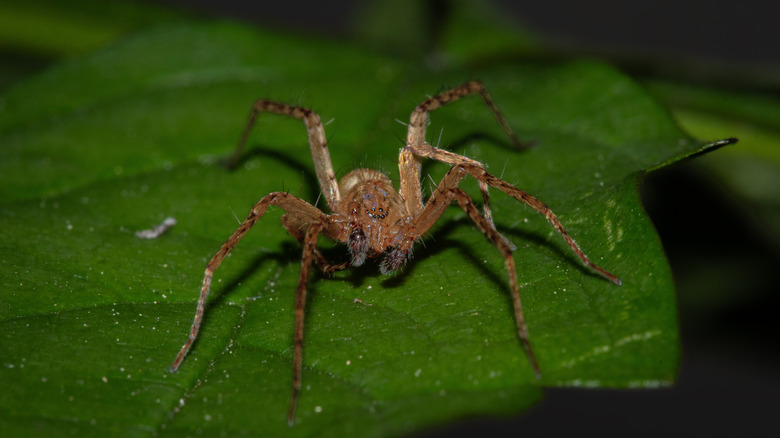12 Species Of Spiders You Shouldn't Squish In Your Home (And What To Do Instead)
We totally get it; seeing a spider scurry across the floor is enough to make anyone jump. It's natural to want to grab the closest shoe or rolled-up magazine and go for the kill. But there are several reasons why squishing a spider isn't such a good idea, and it's not just about being nice to them. Smashing a spider can result in dozens of its babies running off from their mother's body and hiding in your home (yikes). In some other cases, like with poisonous species, attacking a spider with a shoe puts you at risk of getting bitten. And yes, in some cases, the reason why you shouldn't kill a spider is because it's probably doing more good than harm.
Not all spiders are the same. Some spiders, like the brown recluse and black widow, are incredibly dangerous. If you see one in your home, it's advised to call a professional pest control company and not get too close. In the meantime, you can use the vacuum technique to safely remove it from your house. To do this, take off the floor brush from your vacuum and use the hose to suck up the spider, moving slowly and without making any harsh movements. Make sure to hold the hose from the far end to be safe. When you're done, bring the vacuum outside right away to empty the bin or bag into a sealed garbage bag. For some harmless species, like daddy longlegs, you can use the cup and paper technique to move spiders outside or try to keep spiders from invading your home with the help of popular scents, like peppermint.
Brown recluse
There are a few reasons why you should never squish a brown recluse in your home. First and foremost, these are dangerous spiders whose bites can cause some serious damage, so angering them is highly unsafe. In addition, brown recluses carry their egg sacs on their bodies until they're ready to hatch, and each egg sac of a brown recluse might contain 30 to 300 babies. Safely removing one spider is much better than killing it, only to release all of its babies in your house.
Black widow
In a similar vein, the black widow is a spider that you don't want to squish if you see it. Each egg sac of a black widow contains up to 300 eggs, and squishing a mom could result in the horrifying sight of all of its babies running off. Additionally, black widows are known for their aggression and speed. If you try to squish it and miss, it's likely to run after you to try to bite you. These are no pushovers, and they hold a grudge, so you should avoid angering them as much as possible.
Common American house spider
OK, now that we've discussed the troublemakers, let's address the kinder spiders. We get it; the common house spider is not a pretty sight to see. But killing them could actually end up creating more pest issues in your home. These are friendly crawlers that help keep other bugs, especially nasty and dangerous ones like disease-carrying mosquitoes, out of your living space. If you don't want to sleep with one above your bed, consider some more humane ways to get rid of spiders in your home, like moving it outdoors or spraying some peppermint essential oil at entry points.
Wolf spider
A wolf spider looks a bit icky, but it's actually a really beneficial type of spider. They're able to bite, but they don't typically do it, and their bite is not very dangerous because they don't have a strong venom like brown recluses and black widows. Instead, they're likely to eat nasty bugs in your home, including cockroaches. The main reason you don't want to squish a wolf spider is that they carry their egg sacs on their abdomens. Instead, use traps or a vacuum to get rid of them.
Yellow sac spider
The yellow sac spider can be found in homes, especially if small insects are living there that they can eat. However, these are not the types of spiders you want to cohabitate with because they can bite, and while their bite isn't anything like that of a brown recluse, it's still not pleasant. In addition, these can quickly become invasive, so it's best to get pest control involved rather than trying to solve the issue yourself with a rolled-up magazine.
Daddy longlegs
Daddy longlegs, also called cellar spiders, are a pretty good roommate to have. They're small, prey on other bugs, and they're not poisonous to humans. They have long and delicate legs (hence their name), and they hang out in room corners. However, some people dislike seeing them in their home and would like them out. But because they carry their egg sacs in their mouths (you read that right), it's best not to squish them. To avoid releasing 50 babies inside your home, reach for the vacuum instead of the shoe.
Nursery web spider
Nursery web spiders are harmless to humans, but they are meant to live outside, not in your home. You'll typically find them in plants, walking around the ground, or in grass. If you see one in your home, it's probably lost, and while it looks a bit scary, it's best not to squish it. These guys are great for your garden, where they'll prey on bugs. They might be carrying an egg sac in their mouths, so avoid squishing and try to move it to the garden instead, using the good old cup and paper method.
Brown widow
Brown widows are a type of spider that looks very similar to young black widows. While their bite isn't as bad as that of their lookalikes, it's still not pleasant. But the main concern with these is that you might misidentify it and not realize that you're dealing with a young black widow spider, which is also brown. If you attempt to kill it with a rolled-up newspaper, you might end up with an unexpected black widow bite, so it's best to grab the vacuum.
Noble false widow
The noble false widow is another one of these spiders that you might mistake for a black widow because they have a similar rounded abdomen with markings on it. These are not common across the United States, except for California. Nonetheless, it's best to avoid messing with anything that looks like a black widow out of caution and use the vacuum method instead.
Southern house spider
Similarly, some brown recluse lookalikes are crawling around. One spider that might make your heart skip a beat is the southern house spider, of which the males are often confused with a brown recluse. If you're not an expert in spider identification and can't confirm for sure whether your visitor is a southern house spider or a brown recluse, it's best to avoid squishing and angering it. Instead, grab the vacuum and handle it as if it were a brown recluse.
Spitting spider
Spitting spiders are not dangerous to humans, but unfortunately for them, they look a whole lot like brown recluses. These two species have similar colors and long, skinny legs, and they even have the same number of eyes (six, unlike many common species). The main difference is found on their legs, where spitting spiders have more patterns. If you can't see these patterns from afar, avoid getting too close to look. Instead, suck the spider into your vacuum to be safe.
Grass spider
These spiders also look like brown recluses, except that they typically prefer to hang out outside. At times, the males might come indoors, especially during mating season or when temperatures drop, but as their name implies, they much prefer grass. They're shy, and they don't carry their egg sacs, instead placing them in a nest. If you're trying to get rid of this brown recluse spider look-alike, opt for a safe method like a vacuum rather than a shoe.

